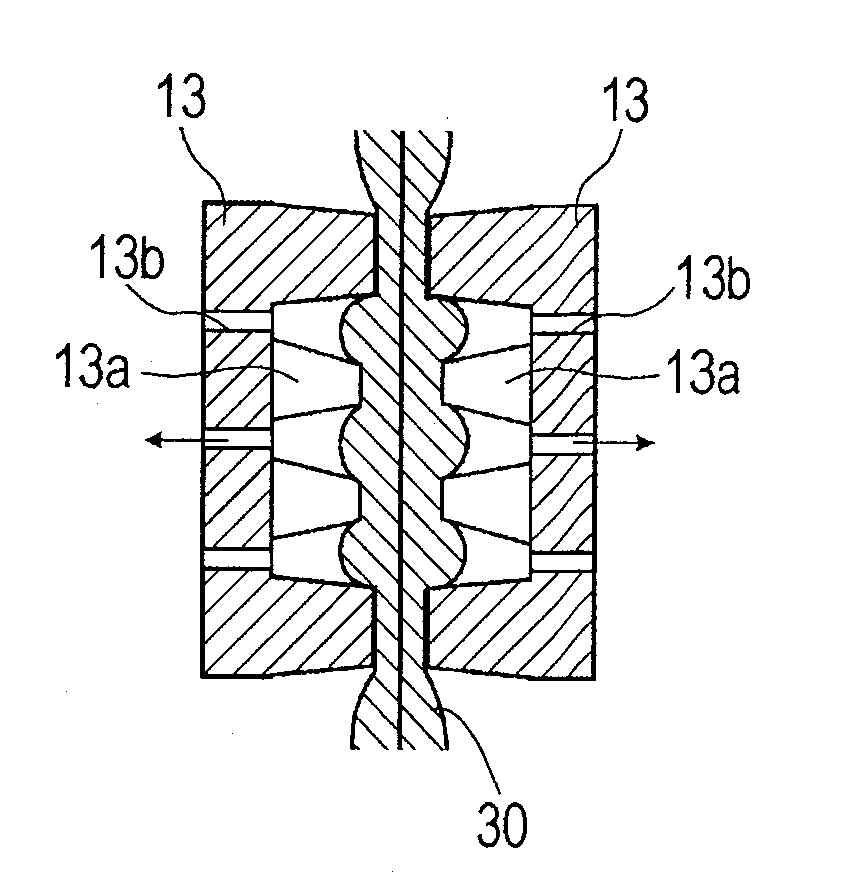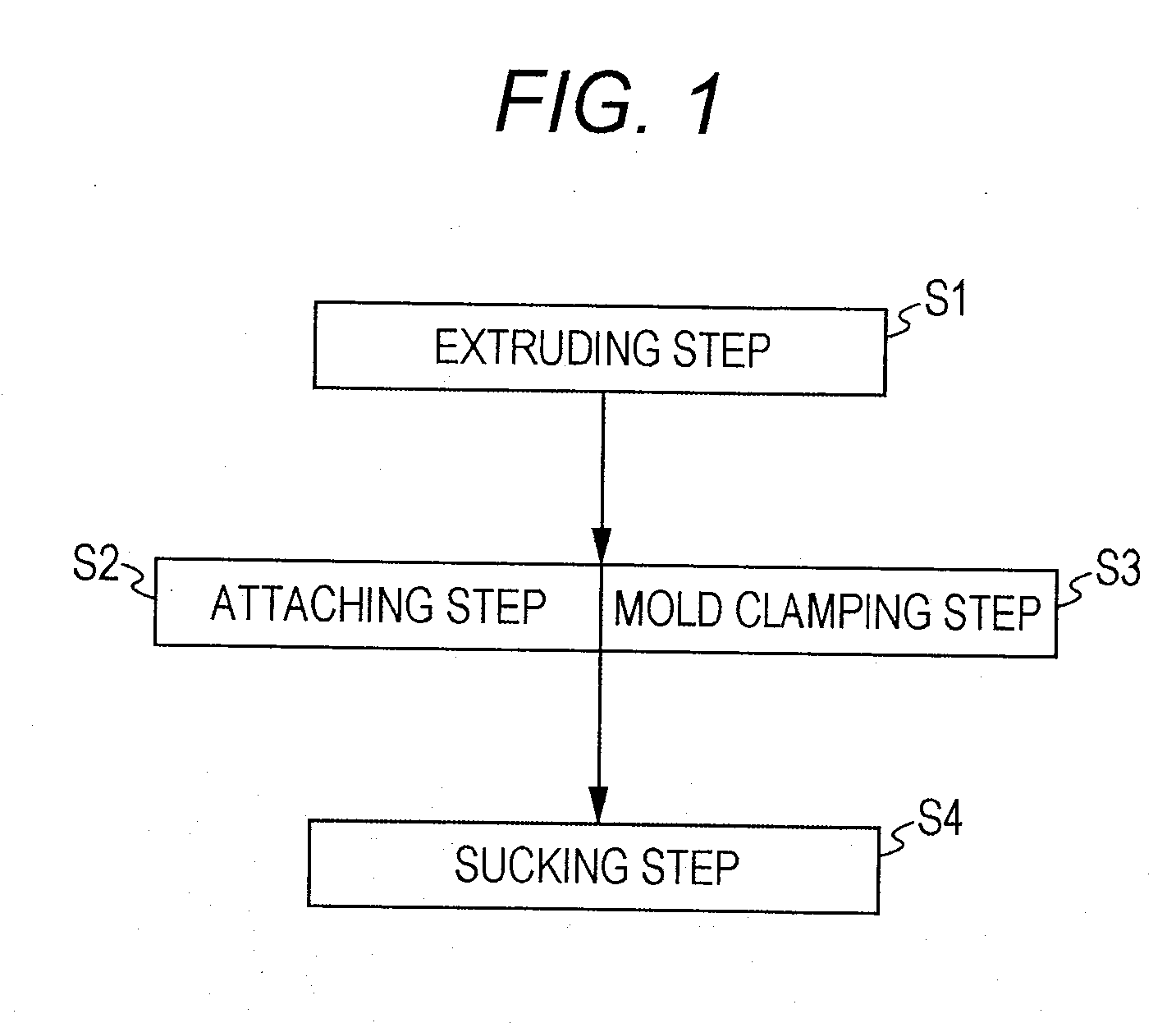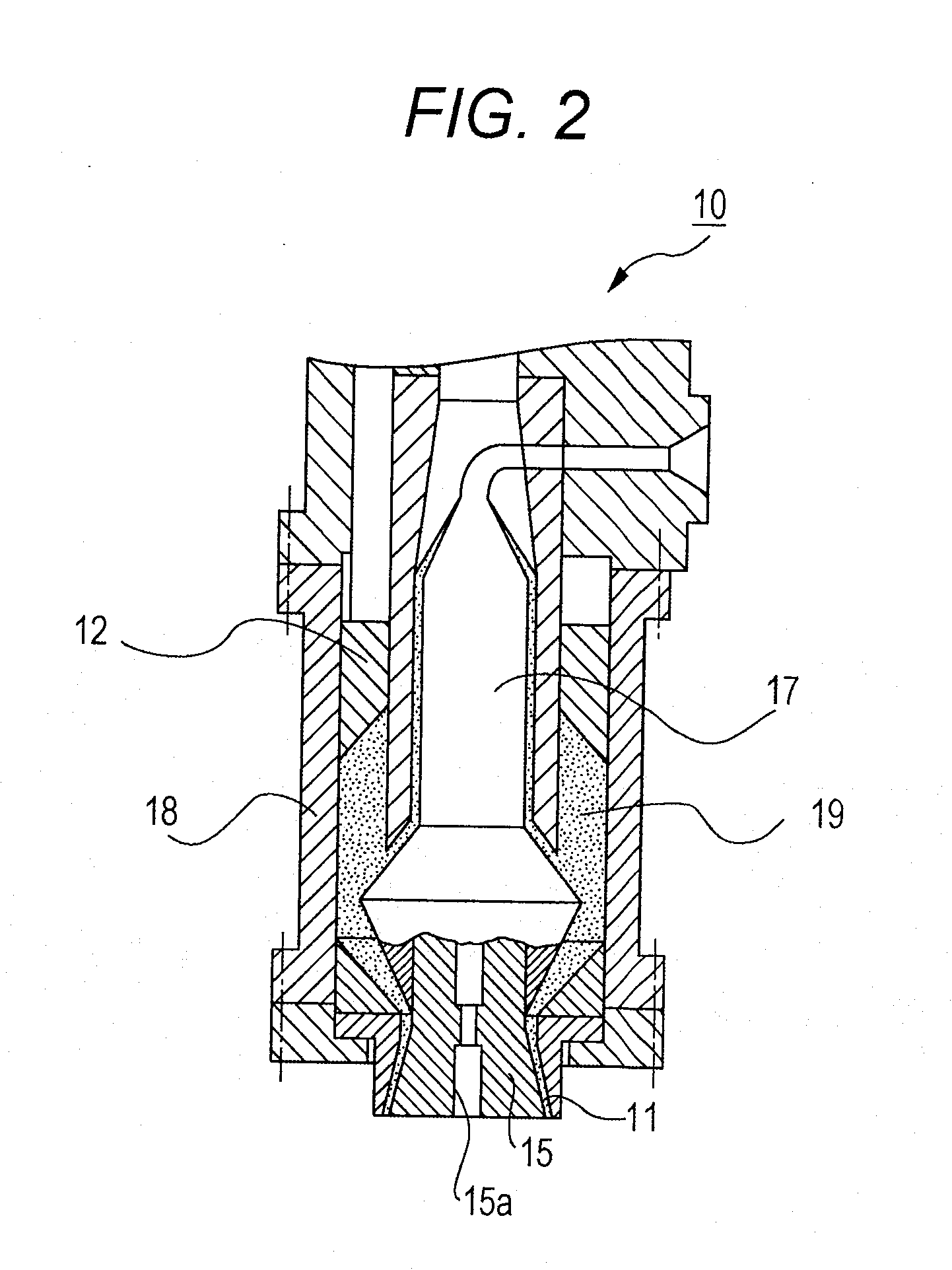Method for manufacturing molded foam
- Summary
- Abstract
- Description
- Claims
- Application Information
AI Technical Summary
Benefits of technology
Problems solved by technology
Method used
Image
Examples
first embodiment
[0042]The following describes a first embodiment of a method for manufacturing a molded foam according to the present invention, taking an example in which a cylinder-shaped foamed parison is used.
[0043]FIG. 1 is a flowchart of the method for manufacturing a molded foam according to the first embodiment.
[0044]Referring to FIG. 1, the method for manufacturing a molded foam according to the first embodiment includes an extruding step S1, an attaching step S2, a mold clamping step S3, and a sucking step S4. In the extruding step S1, a cylinder-shaped foamed parison in a cylinder shape is formed by extruding a resin blend containing a foaming agent and a thermoplastic resin. In the attaching step S2, facing portions of an inner wall surface of the cylinder-shaped foamed parison are closely attached to each other, so that a foamed parison laminated body is formed. In the mold clamping step S3, sealing and mold clamping are performed to the foamed parison laminated body by clamping the fo...
second embodiment
[0096]The following describes a second embodiment of the method for manufacturing a molded foam according to the present invention.
[0097]FIG. 7 is a flowchart of the method for manufacturing a molded foam according to the second embodiment.
[0098]Referring to FIG. 7, the method for manufacturing a molded foam according to the second embodiment includes the extruding step S1, a deforming step S5, the attaching step S2, the mold clamping step S3, and the sucking step S4. In the extruding step S1, the cylinder-shaped foamed parison in the cylinder shape is formed by extruding the resin blend containing the foaming agent and the thermoplastic resin. In the deforming step S5, the cylinder-shaped foamed parison is deformed into a flat shape. In the attaching step S2, the facing portions of the inner wall surface of the cylinder-shaped foamed parison are closely attached to each other, so that the foamed parison laminated body is formed. In the mold clamping step S3, the sealing and the mol...
third embodiment
[0106]The following describes a third embodiment of the method for manufacturing a molded foam according to the present invention.
[0107]The method for manufacturing a molded foam according to the third embodiment is the same as the method for manufacturing a molded foam according to the second embodiment, other than that the deforming step is different from that in the method for manufacturing a molded foam according to the second embodiment.
(Deforming Step)
[0108]The deforming step is a step performed between the extruding step S1 and the attaching step S2, and in which the cylinder-shaped foamed parison is deformed into the flat shape using a pair of guiding members.
[0109]FIG. 9A is a vertical sectional view illustrating the deforming step in the method for manufacturing a molded foam according to the third embodiment, and FIG. 9B is a sectional view taken along a line B-B in FIG. 9A.
[0110]Referring to FIG. 9A, in the deforming step, a pair of guiding members 22 that are provided b...
PUM
| Property | Measurement | Unit |
|---|---|---|
| Temperature | aaaaa | aaaaa |
| Pressure | aaaaa | aaaaa |
| Shape | aaaaa | aaaaa |
Abstract
Description
Claims
Application Information
 Login to View More
Login to View More - R&D
- Intellectual Property
- Life Sciences
- Materials
- Tech Scout
- Unparalleled Data Quality
- Higher Quality Content
- 60% Fewer Hallucinations
Browse by: Latest US Patents, China's latest patents, Technical Efficacy Thesaurus, Application Domain, Technology Topic, Popular Technical Reports.
© 2025 PatSnap. All rights reserved.Legal|Privacy policy|Modern Slavery Act Transparency Statement|Sitemap|About US| Contact US: help@patsnap.com



